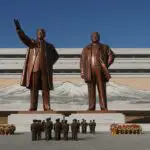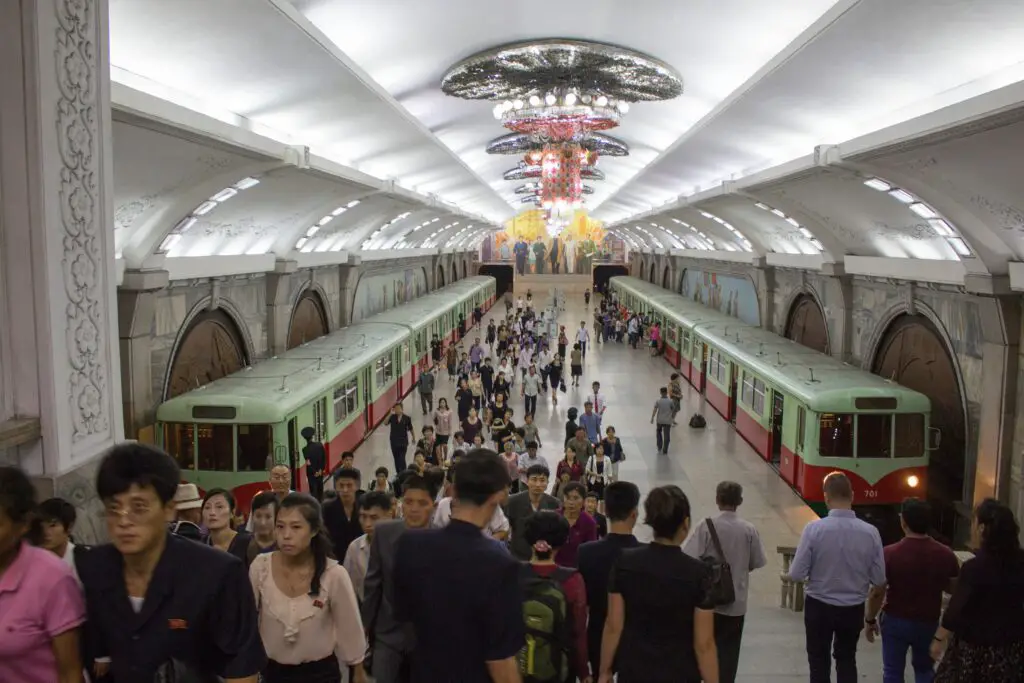What is one way a command economy affects the lives of private citizens? A command economy tends to exist under a dictatorship or authoritarian government, and it is a type of economic system where a central authority makes all economic decisions. This economic system can have a large impact on the lives of private citizens. From controlling prices to dictating wages and more, there are numerous ways that a command economy affects the lives of private citizens.
What is one way a command economy affects the lives of private citizens?

One way a command economy affects the lives of private citizens is that the citizens may have less say in what gets produced and how it gets distributed, that is, they have no say in making economic decisions. This can lead to frustration if people feel that their needs are not being met by the government’s plan. For example, the government builds and allocates houses for citizens in North Korea and the government also decides for its citizens where they will live. This means whether they like the nature of the houses or not; or whether they like living in the area allocated to them or not, they have no choice but to accept it. To make it worse, there is no guarantee of staying in a place permanently as you can be relocated.
See also: Industrial Revolution Years, Timeline, and Inventions
How does a command economy affect citizens?
A command economy can affect private citizens in many ways, some of the effects include a lack of choices, shortages of goods and services, lack of innovation, and many more. We will discuss in the following sections the various ways through which private citizens can be affected in a command economy.
In a command economy, the government centrally plans and controls the production and distribution of goods and services. This can have a number of negative effects on private citizens.
One way a command economy affects the lives of private citizens is in the way resources are allocated. There may be shortages of certain goods and services. This can cause long lines and rationing, as well as inflation as people compete for scarce resources. You may have to wait for hours just to buy pineapples, or even to buy eggs.
Also, the lives of private citizens in a command economy can be affected when innovation is stifled because of the restrictions and prohibitions on what needs to be produced, how much needs to be produced, and how much you must sell. As businesses are not able to keep any extra profits they may make, the motivation for innovation and quality is suppressed. As a result, citizens may end up with lower-quality goods and services than they would in an economy with more competition.
Finally, private citizens may have fewer rights and freedoms in a command economy than they would in a democracy, as the government has more control over all aspects of society.
How do command economies affect a worker’s life?
Since the government centrally plans and dictates what goods and services are produced in command economies, this can limit workers’ freedom to choose their occupation and working hours, as well as what they can produce and sell. It can also result in less overall economic growth and efficiency than a free market economy. Again, the wages and salaries are controlled as well, and no matter how a worker increases his efforts, he cannot increase the income.

What is one 1 negative of living in a command economy?
While a command economy does have some advantages, there are also some significant negatives of living in a command economy.
An important negative of living in a command economy is that private citizens have very little say in how the economy is run. Since the government makes all the decisions, whether the officials in charge of decision-making know how to manage an economy or not, their decisions are going to affect everyone; this can lead to inefficiencies and shortages, as the government may not always make the best decisions about what people need and want.
Also, private citizens may not be able to start their own businesses or earn higher incomes, as the government controls their wages and output as well. This can lead to stagnation and a lack of opportunity for many people.
See also: Advantages of a Command Economy
What is one of the biggest problems within a command economy?
When the government controls the economy, it can often lead to inefficiencies in various sectors of the economy and can also lead to wastage. In an unregulated or free market, the laws of demand and supply control the input and output of goods or services; this helps to check wastage or shortages. But in a command economy, the central planners simply give orders for the production of goods that may not be enough for people or could be in excess of what is needed.
For example, the government may produce 100 buses to be used for public transportation; this may not be enough to serve the whole population, and as such, many have to queue up for hours waiting for buses. If this were to be in a free market system, capitalists may increase the number of buses in order to meet demand and increase profit.
Therefore, since a centrally planned economy is not profit-oriented, the motivation to work is low and this can cause inefficiencies in various sectors of the economy.
What are the major problems with a command economy?
- Inefficiencies and Wastage: where the government may produce too much of one good and not enough of another good.
- Lack of Innovation: a centrally planned economy does not allow for much innovation because the government tells businesses what to produce. This lack of innovation can stifle economic growth over time.
- Reduced Economic Freedom: private citizens have very little economic freedom under a command economy because the government makes all the major decisions about what will be produced and how it will be produced; thus, leading to dissatisfaction among citizens who feel like they have no control over their own lives.
The above are the major problems with a command economy. Other problems may be peculiar to specific countries, depending on what the government aims to achieve.
What are two things that a command economy fails to provide consumers?
Choice and competition are the two things that a command economy fails to provide consumers. Because the government controls what needs to be produced, the consumers have no choice but to use only what has been produced. Again, what needs to be produced and how it should be produced is also controlled by the government, hence the consumer will lack quality products because the competition that drives innovation is suppressed.
4 weaknesses of a command economy
- It leads to inefficiencies and wastage; decision-making by the government can be inflexible and slow to respond to changes in circumstances. Because any decision has to go through bureaucratic processes. The end result is economic hardship when circumstances change rapidly.
- Another weakness of a command economy is that it can stifle innovation and creativity.
- An important weakness of a command economy is that it can create inequities in society; because the government may give preferential treatment to certain groups, friends, or special individuals, leading to an unequal distribution of resources.
- It can lead to shortages of goods and services, which disproportionately affects poor and vulnerable citizens who may not be able to access these goods and services.
Nansel is a serial entrepreneur and financial expert with 7+ years as a business analyst. He has a liking for marketing which he regards as an important part of business success.
He lives in Plateau State, Nigeria with his wife, Joyce, and daughter, Anael.
